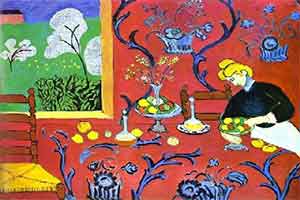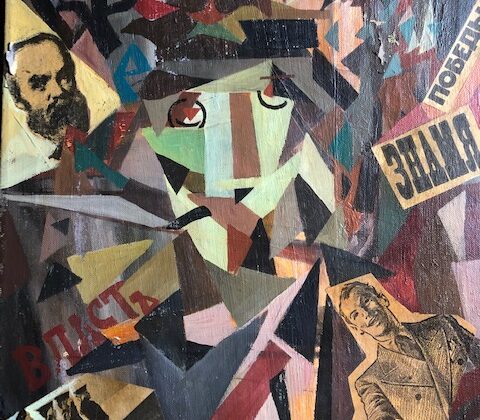Picasso, engraving and lithograph masterpieces Pablo Picasso’s wives, muses and mistresses had an enormous impact on his art
By Prof. Francesco Carelli, University Milan, Rome – During his entire artistic career Pablo Picasso, a master and experimenter, shows a strong interest for graphics, from engravings to etchings, from aquatints to lithographs, creating exemplary works both technically and iconographically in order to express a great variety of contents.
A never-ending desire for exploration, acquisition and innovation distinguishes these works, where autobiographical elements are not scarce and are joined to literary, classical, mythological and erotic themes.
The collection of graphic works presented by Deodato Arte Gallery in Milan, with the exhibition “Picasso, engraving and lithograph masterpieces” is testimony to an eclectic genius, an absolute artistic modernity and versatility, and a constant stylistic evolution
On display there are several lithographs from the 1920s to 1970s, as well as a selection of engravings from the series Suite Voillard (1930-1937) and La Celestine (1968-1971).
The 100 etchings, collected in Suite Voillard and commissioned by the publisher Ambroise Voillard, do not refer to one text only, but mainly deal with five different themes: the love battle, Rembrandt, Minotaur and blind Minotaur, Sculptur’s workshop and Portraits of Voillard. Belonging to these categories there are 73 slates, while the other 27 that remain have random subjects. These works are characterized by simplicity of forms and linearity of drawing: they transmit calmness and peacefulness, dreaming melancholy and at the same time reveal an inner erotic tension. There are many autobiographical hints, especially those linked to the representations of the Minotaur with whom the artist identifies himself due to the legendary character of the creature.
The series of sixty-six plates – etchings and aquatints – known as La Celestine, illustrates the text of Tragicomedia de Calisto y Melibea/Tragicomedy of Calisto and Melibea, a masterpiece of Spanish literature written by Fernando de Rojas in 1499. The artist, fascinated by the female main character, the procuress Celestina, concentrates on her character, deadly and ironic, on her diabolical scheming and romantic intrigues. In fact the images pay particular attention to naked female bodies.
In the exhibition layout a substantial section is dedicated to the lithography technique, already experimented with in the 1920s and which reached its highest peak from 1944 on, when Picasso visits and regularly attends the studio of Fernand Mourlot, a known printing workshop in Paris. Centaur and bacchante with faun (1947) represents this period with its soft and swift lines.
Additional study and research on the art of engravings emerge from the works made on linoleum, a softer and lighter material than wood, endowed with very quick production times and more vivid chromatic hues.
Image 1 of 2
Pablo Picasso Photo: AFP
Pablo Picasso often compared his paintings to the pages of a journal. Yet he hated the idea that art historians and biographers might confine the scope of his work or his character within an article or a book. He worked in many different styles, to avoid becoming mannered, and would periodically change his friends, his entourage, his homes, his pets and, of course, his lovers. As his old friend and secretary, the Spanish poet Jaime Sabartés, once said, ‘That’s his strength! The key to his youth. He leaves his old skin behind him and begins a new existence elsewhere.’ Picasso was so paradoxical that almost any statement made about him tends to be no less true in reverse. How can we be sure of anything about such a mercurial man?
Women were extraordinarily important for Picasso, who was by turns kind and cruel to all his wives, muses and mistresses. According to the French painter Françoise Gilot, who was his mistress for a decade after they met in 1943, Picasso was fond of saying, ‘For me, there are only two kinds of women: goddesses and doormats.’ Yet even the ‘doormats’ played an important role in the evolution of his art: after all, one of the cardinal myths about Picasso is that his work changed direction whenever a new woman became the principal lover in his life. As he once said: ‘When I love a woman, that tears everything apart – especially my painting.’
As a result, certain women are associated with different periods of his career. His first significant lover, Fernande Olivier, a model with copious reddish hair, is the roseate goddess who dominated Picasso’s output during the first decade of the 20th century. Olga Koklova, a dancer with Diaghilev’s Ballets Russes who became Picasso’s first wife in 1918, presided over what one of Picasso’s poet friends satirically called his ‘duchess period’, when he fraternised with the rich and famous and produced neoclassical work.
The blond Marie-Thérèse Walter, with whom Picasso began a passionate affair in the mid-1920s, inspired a run of sumptuously erotic canvases. Dora Maar, the Surrealist photographer who became Picasso’s companion in the 1930s, will forever be remembered as the ‘Weeping Woman’, immortalised in the famous painting of that name in the Tate.
Few of these women met happy ends: as one mistress put it, ‘Picasso was a sun all on his own. He burned, consumed and reduced to ashes anyone who approached him.’ Fernande was impoverished for most of her life, while her former lover amassed inordinate wealth. Olga and Dora both suffered mental-health problems. Marie-Thérèse and Picasso’s second wife, Jacqueline Roque, both committed suicide.
Yet three women, all of whom were intimately involved with the artist during the 1950s, survived the experience of flying close to the sun that was Picasso: Françoise Gilot, Geneviève Laporte and Sylvette David.
By the early 1950s, Picasso’s life was disintegrating. For part of each year he was based in the southern French town of Vallauris, where he had been making innovative ceramics at the Madoura pottery since 1947. But he was no longer considered to be in the vanguard of modern art, and the market for his work had become sluggish. The response to an exhibition of almost 150 ceramics in Paris in 1948, for instance, had been indifferent (‘They expect to be shocked and terrorised,’ Picasso said. ‘If the monster only smiles, then they’re disappointed’). Moreover, his relationship with Gilot, who had given him two children, was collapsing. In part, this was thanks to Picasso’s affair with Geneviève Laporte, a pretty poet whom he had met as a schoolgirl in Paris soon after the liberation. In September 1953 Gilot took the children, bought a one-way train ticket to Paris, and walked out on Picasso – a display of independence that distressed his male ego.
That winter Picasso began a series of about 40 paintings, drawings and sculptures inspired (unusually for him, since he ordinarily worked from memory) by a real-life model called Sylvette David. Picasso had spotted Sylvette, a gorgeous 19-year-old in Vallauris, where she was living with her English boyfriend, Toby Jellinek, a sculptor and furniture designer. Sylvette never became Picasso’s mistress, and their friendship faded in the summer of 1954. By the end of the year, Jacqueline Roque, a 27-year-old divorcee who had worked in the Madoura pottery’s saleroom, had replaced Gilot. Picasso married Jacqueline in 1961, seven months short of his 80th birthday.
Picasso’s mistress Geneviève Laporte, who was embroiled with the artist while he was still living with Gilot, interviewed, said: ‘Picasso was just the contrary of what you read,’ she was a former Resistance fighter who became a documentary filmmaker as well as a poet, and in 2005 auctioned off 20 sketches by Picasso that the artist had given to her. ‘He was shy, full of tenderness, very delicate.’ Seven of the drawings representing Geneviève nude, were used to illustrate Les Cavaliers d’ombre, a volume of her poems that appeared in June 1954.
During their initial meeting, Laporte infuriated Picasso by suggesting that young people did not understand his painting. Picasso became absolutely mad and said, “Painting is not meant to be understood. My painting is not mathematics. Do you ‘understand’ the songs of birds? Do you ‘understand’ pommes de terre?”
The months that followed proved difficult for Picasso, who was unaccustomed to living alone. In December 1953 he painted a number of haunting paintings in blacks, whites and greys, including
The women in Picasso’s life were a very important inspiration for his work and he was driven by the imperative of his art. So to make everything turn around the women is a mistake about him.
Picasso died at his villa near the village of Mougins in the hills above Cannes in April 1973. He left behind him a vast and varied body of work, consisting of more than 43,000 pieces – the largest recorded output of any artist ever.
He presented humanity in all its rawness, and excluded nothing. There is no emotion or sensation, no matter how exalted or how depraved, that Picasso did not express visually in a brilliant and arresting new way.
So who was the real Picasso? The unfaithful control freak who tormented Françoise Gilot? The tender, timid lover who seduced Geneviève Laporte? Or the playful, chain-smoking father- as with Sylvette David?
The answer is that he was all of these and none of these. Picasso’s identity was supremely complex. One minute, he could be charming as an angel; the next, he was diabolically foul. The unifying factor was his compulsion to make art. As he said: ‘Painting makes me do what it wants.




